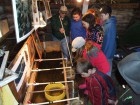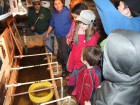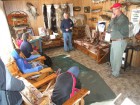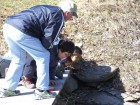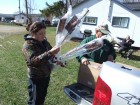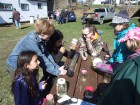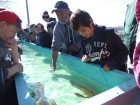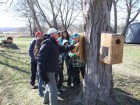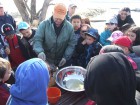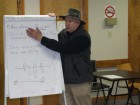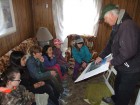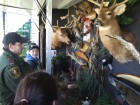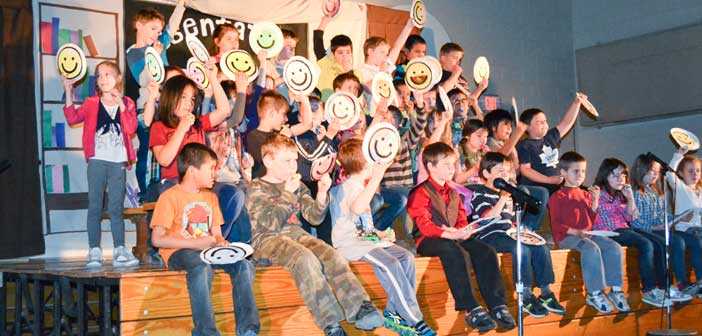Students learn conservation from award winning Island conservationists
SHEGUIANDAH—The giggles, murmur and chatter to be expected from dozens of elementary school children on a field trip during a bright spring Tuesday morning last week paused in rapt attention as the instructors at the Little Current Fish and Game Club annual walleye hatchery harvest walleye eggs and sperm, followed by insightful questions and observations.
Over the course of Monday and Tuesday members of the Little Current Fish and Game Club, Ministry of Natural Resources, the Manitoulin Stewardship Council and Manitoulin Streams assisted in teaching students from Assiginack Public School, Little Current Public School, Central Manitoulin Public School and Lakeview School about conservation and the important role it plays in keeping the joys and benefits of our natural environment there for future generations to enjoy.
The innovative program, for which LCFGC president Bill Strain (and by his most insistent extension the entire club) recently received a prestigious award from the Ontario Federation of Anglers and Hunters, has been running for several years now and the club’s volunteers have the drills purring like a well-oiled machine.
Beginning with a dry land exhibit of the type of trap used to herd the walleye into the waiting nets of the egg and sperm harvesters, Mr. Strain explains the process to the gathered students. The students then break into smaller groups and proceed to one of the display cottages, vans or outdoor exhibits. There they learn about bass nest building, with an animated Seija Deschenes of Manitoulin Streams explaining the importance of the nests, a fossil display where fossil aficionado and author Bill Caesar of White’s Point talked about the Island’s world famous fossils, Gary Green of Little Current explained the various fish and animals common to the Manitoulin region in one cottage, while an instructor from Manitoulin Streams took the students through the work they do to protect fish habitat on Manitoulin. Marcel Gauthier and Jim Griffin were ready and set to take the students on a river walk tour, where they got to see the fish moving up Bass Creek to spawn, an MNR van manned by a conservation officer taught the students about the birds and animals common to the North, a biology instructor got the students up close and personal with a great collection of live aquatic insects before a tour of the fish hatchery itself and its millions of eggs-soon-to-be-fry and finally, the piece de resistance, a free fishing rod and reel for each student.
Mr. Strain’s smile is particularly broad this morning as he points out that the fish coming into Bass Creek, pretty much all alumni of the club’s hatchery, are both numerous and exceptionally large this year. The practical reward of countless hours of hard, wet work harvesting the eggs and sperm and late night patrols of the creek and bay to discourage poachers and over-exuberant First Nations members exercising their traditional harvesting rights. Those late night patrols have often enlisted the aid of local First Nations elders who pointed out the importance of conservation in preserving the resource for the future seven generations.

